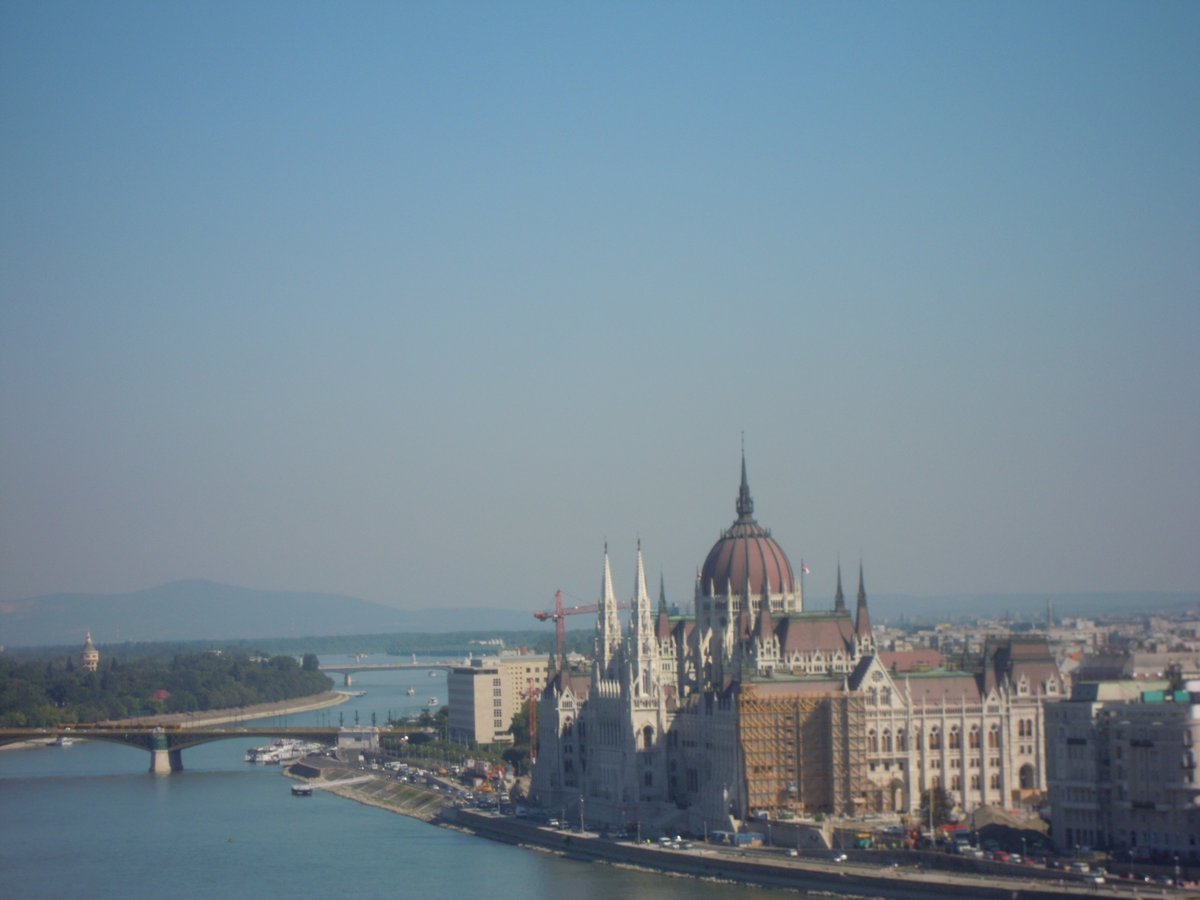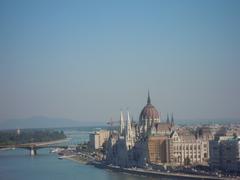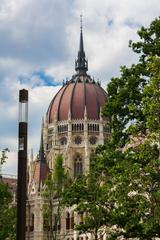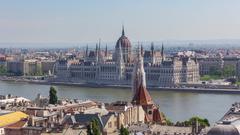
Hungarian Parliament Building: Visiting Hours, Tickets, and Travel Guide
Date: 14/06/2025
Introduction
Nestled along the banks of the Danube River, the Hungarian Parliament Building (Országház) is not only the seat of Hungary’s National Assembly but also a symbol of the country’s cultural heritage and architectural grandeur. Built between 1885 and 1904 to commemorate the nation’s millennium, the Parliament is a testament to Hungary’s resilience, autonomy, and European identity. Adorned with statues, intricate stained glass, and gold-plated halls, it draws hundreds of thousands of visitors annually. This in-depth guide covers everything you need to know about visiting the Parliament, including its history, ticketing, accessibility, guided tours, and nearby attractions. For the most up-to-date information, always consult the official Hungarian Parliament website and Budapest Tourism.
Table of Contents
- History and Cultural Significance
- Architectural Highlights and Symbolism
- Visiting Hours and Ticket Information
- Guided Tours and Accessibility
- Practical Travel Tips
- Getting There
- Nearby Attractions
- Frequently Asked Questions (FAQ)
- Conclusion and Call to Action
- References
History and Cultural Significance
The Hungarian Parliament Building’s story begins in the late 19th century, following the unification of Buda, Pest, and Óbuda into Budapest in 1873 and Hungary’s increased autonomy after the Austro-Hungarian Compromise of 1867. The government launched an architectural competition in 1882, and Imre Steindl’s neo-Gothic design was chosen for its grandeur and symbolic resonance.
Construction began in 1885, employing over 1,000 workers and using more than 40 million bricks. The building was inaugurated in 1896, marking the 1,000th anniversary of the founding of the Hungarian state by the Magyars in 896 AD—a moment immortalized by the 96-meter-high central dome. Throughout the 20th century, the Parliament bore witness to pivotal historical events, including World War II damage, the 1956 Revolution, and Hungary’s transition to democracy. In 1987, it was incorporated into the UNESCO World Heritage Site “Banks of the Danube”.
Architectural Highlights and Symbolism
The Hungarian Parliament Building is a masterpiece of Neo-Gothic architecture, enhanced by Renaissance and Baroque elements. Its 268-meter-long façade—one of the world’s longest for a legislative building—faces the Danube, while the central dome rises 96 meters, echoing the nation’s founding year.
Key Features:
- Exterior: Flanked by 242 sculptures of Hungarian rulers and allegorical figures, pointed arches, spires, and intricate stonework.
- Interior: 691 rooms, 28 entrances, and 18,000 square meters of space. Lavish decorations include over 40 kilograms of 22-carat gold, stained glass by Miksa Róth, and the use of local materials like Slavonian oak and Zsolnay ceramics.
- Dome Hall: Houses the revered Holy Crown of Hungary and other coronation regalia.
- Symbolism: The design reflects Hungary’s bicameral legislative system (now unicameral), national unity, and democratic values.
At night, the Parliament’s illuminated façade reflected on the Danube creates one of Budapest’s most iconic images (visithungary.com).
Visiting Hours and Ticket Information
Guided tours are the only way to access the Parliament’s interior. Tours are available daily, with English-language slots typically at 10:00, 12:00, 12:30, 13:30, 14:30, and 15:30 (Hungarian Parliament). Note that the building is closed during plenary sessions and on Hungarian public holidays (e.g., Jan 1st, Mar 15th, Easter, May 1st, Aug 20th, Oct 23rd, Nov 1st, and Dec 24–26).
Ticket Prices (Effective January 2025):
- EEA Citizens: HUF 6,500 (~€16.5)
- EEA Students (6–24 yrs): HUF 3,250 (~€8.25)
- Non-EEA Citizens: HUF 13,000 (~€33)
- Non-EEA Students (6–24 yrs): HUF 6,500 (~€16.5)
- Children under 6: Free
- Family Tickets: Discounted rates available
How to Buy Tickets: Advance online purchase is highly recommended via the official provider Jegymester or at the Visitor Center (on-site purchases may involve long waits) (Budapest by Locals). Book 2–6 weeks ahead, especially in peak season.
Guided Tours and Accessibility
Tour Content: Guided tours last about 45 minutes and include the Main Staircase, Dome Hall (with the Crown Jewels), Old Upper House Hall, and ceremonial areas (Budapest Travel Tips). Tours are available in multiple languages, with audioguides in over 20 languages (Parliament.hu).
Accessibility: The Parliament is fully wheelchair accessible, with ramps, elevators, and accessible restrooms (Disabled Accessible Travel). Wheelchair rentals are offered, and visitors needing assistance should contact staff in advance. The Visitor Center and main entrances are accessible, though public transport access may be limited (Motion4Rent).
Practical Travel Tips
- Arrive Early: Morning tours are less crowded and better for photos (Nannybag).
- Security: Allow 10–15 minutes for security checks; large bags are not permitted (Hungarian Parliament).
- Photography: Allowed in most areas except the Dome Hall (no flash or tripods).
- Dress Code: While not strict, respectful attire is recommended.
- Tour Language: Confirm your preferred language when booking; audioguides are available if your language is not scheduled.
- Nearby Attractions: Margaret Island, St. Stephen’s Basilica, the Shoes on the Danube Bank, and the Chain Bridge are within walking distance (Budapest Tours).
Getting There
The Parliament is located at Kossuth Lajos tér 1-3, 1055 Budapest. The nearest metro stop is Kossuth Lajos tér (Metro Line 2), with tram and bus stops nearby (Budapest by Locals). Its central location makes it easily accessible from most parts of the city.
Nearby Attractions
After your tour, consider exploring:
- Shoes on the Danube Bank: A poignant Holocaust memorial.
- St. Stephen’s Basilica: The city’s largest church.
- Buda Castle and Fisherman’s Bastion: Across the river, offering panoramic city views.
- Kossuth Square: Home to other government buildings and monuments.
Frequently Asked Questions (FAQ)
Q: What are the Parliament’s visiting hours?
A: Guided tours run at fixed times daily, with English tours typically at 10:00, 12:00, 12:30, 13:30, 14:30, and 15:30. Verify schedules on the official website.
Q: How can I buy tickets?
A: Purchase online through Jegymester or at the Visitor Center (advance booking strongly advised).
Q: Is the building accessible for wheelchair users?
A: Yes, with accessible entrances, elevators, and restrooms. Contact staff in advance for special assistance.
Q: Are children allowed?
A: Yes. Children under 6 enter free; family tickets are available.
Q: Can I take photos inside?
A: Yes, except in the Dome Hall where the Crown Jewels are displayed.
Q: What is the best time to visit?
A: Early mornings or late afternoons on weekdays are least crowded.
Conclusion and Call to Action
The Hungarian Parliament Building is more than a seat of government; it is a living monument to Hungary’s national pride and democratic journey. Its soaring spires, rich symbolism, and pivotal role in Hungarian history make it an essential stop on any Budapest itinerary. Enhance your experience by planning ahead—book tickets early, choose your preferred tour language, and allow time to explore the surrounding historical sites.
For the latest information, always consult the official Parliament website. For real-time updates, guided audio tours, and travel tips, download the Audiala App.
References
- Hungarian Parliament Official Site
- Budapest Tourism
- visithungary.com
- Hungarian Parliament Visitor Info
- Budapest Travel Tips – Visiting Parliament
- Parliament Tickets – Jegymester
- Budapest by Locals – Parliament Guide
- Disabled Accessible Travel
- Nannybag – Visitor Tips
- Motion4Rent – Accessible Budapest
- Audiala App










































































































































































